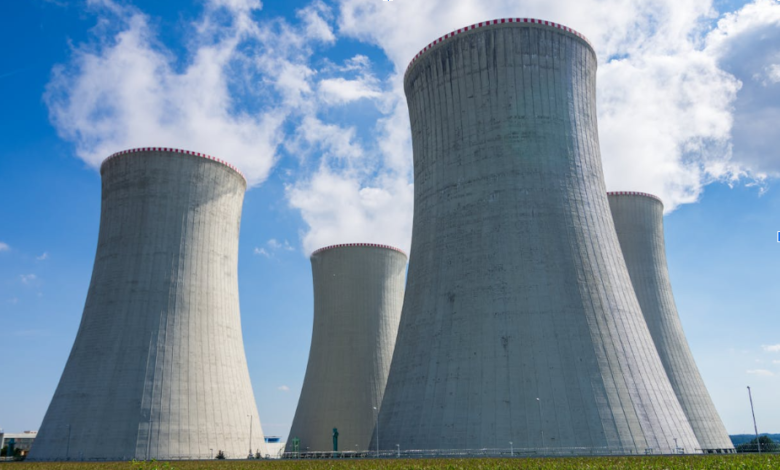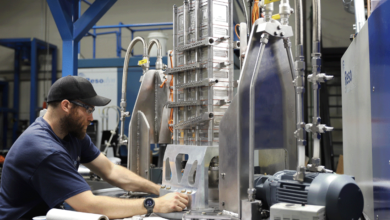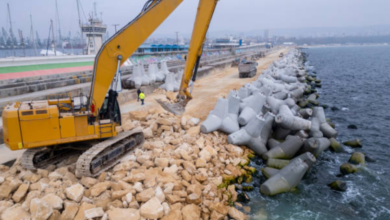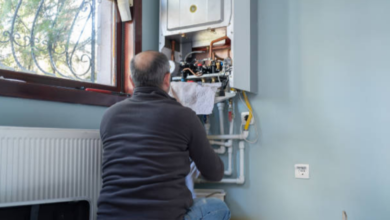Steam Turbine Diaphragms: Maintenance Best Practices for Power Plants

Steam turbines are the backbone of power generation across the globe, playing a critical role in both fossil-fuel and renewable energy facilities. Among the turbine’s many components, steam turbine diaphragms are particularly significant. These stationary components, positioned between rotating blades, control steam flow, optimize pressure stages, and contribute directly to the turbine’s efficiency and reliability.
Because diaphragms are constantly exposed to high temperatures, pressures, and steam velocity, they experience wear and tear over time. Poorly maintained diaphragms can lead to reduced efficiency, higher fuel costs, and even catastrophic turbine failures. This makes steam turbine diaphragm maintenance a priority for plant operators who want to extend asset life, reduce downtime, and maintain cost-effective operations.
In this article, we will explore the importance of diaphragms, common issues they face, and best practices for maintaining them in power plants.
Understanding the Role of Steam Turbine Diaphragms
Steam turbine diaphragms are stationary rings containing nozzles that direct steam at the proper angle and velocity onto the rotating blades. They are installed at different stages of the turbine, dividing the casing into pressure sections and enabling controlled expansion of steam.
Key functions of diaphragms include:
- Directing Steam Flow: Guiding high-energy steam toward rotating blades for maximum power output.
- Sealing: Preventing steam leakage between pressure stages, which ensures efficiency.
- Maintaining Pressure Ratios: Controlling how pressure drops across stages to balance turbine performance.
Without properly maintained diaphragms, power plants risk efficiency loss, increased operating costs, and accelerated wear of turbine blades and other components.
Common Issues with Steam Turbine Diaphragms
Like any high-stress turbine component, diaphragms are prone to degradation over time. Some common issues include:
- Erosion and Corrosion
- Caused by high-velocity steam carrying water droplets, contaminants, or chemical deposits.
- Leads to thinning of diaphragm material and loss of efficiency.
- Caused by high-velocity steam carrying water droplets, contaminants, or chemical deposits.
- Cracking and Fatigue
- Thermal cycling and high operating stresses can cause cracking in nozzle rings and casing supports.
- Left unaddressed, cracks may result in catastrophic failure.
- Thermal cycling and high operating stresses can cause cracking in nozzle rings and casing supports.
- Seal Wear
- Labyrinth or interstage seals in diaphragms often wear down due to friction and steam leakage.
- This increases steam loss and reduces output efficiency.
- Labyrinth or interstage seals in diaphragms often wear down due to friction and steam leakage.
- Nozzle Blockage
- Deposits or foreign particles may obstruct steam paths.
- Blockages cause uneven steam flow, vibrations, and blade damage.
- Deposits or foreign particles may obstruct steam paths.
- Distortion or Misalignment
- Thermal expansion and uneven stresses may warp diaphragm components.
- Misaligned diaphragms cause steam leakage and mechanical strain on blades.
- Thermal expansion and uneven stresses may warp diaphragm components.
Maintenance Best Practices for Steam Turbine Diaphragms
To maximize turbine performance and minimize downtime, power plants must implement structured maintenance strategies for diaphragms. Here are the best practices:
1. Regular Inspections and Monitoring
Routine inspection is the foundation of diaphragm maintenance. This includes:
- Visual Inspections: During scheduled outages, diaphragms should be examined for cracks, erosion, and wear.
- Non-Destructive Testing (NDT): Techniques such as ultrasonic testing, dye penetrant inspection, and magnetic particle testing detect subsurface cracks.
- Performance Monitoring: Tracking turbine efficiency, steam flow, and vibration levels provides early warning of diaphragm deterioration.
2. Preventive Maintenance Scheduling
A proactive maintenance schedule based on operating hours and performance data is essential. Instead of waiting for failures, planned inspections and repairs help minimize costly unplanned outages. Typical intervals for diaphragm checks align with major turbine overhauls, which may occur every 5–7 years depending on duty cycle.
3. Proper Cleaning and Surface Treatment
Deposits and contaminants on nozzle passages reduce efficiency. Cleaning methods include:
- Abrasive Blasting: For removing scale, corrosion, and deposits.
- Chemical Cleaning: To dissolve stubborn deposits without damaging the base metal.
- Coating and Surface Treatments: Applying protective coatings can reduce future erosion and corrosion.
4. Seal Repair and Replacement
Since seals are prone to wear, timely repair or replacement is critical. Options include:
- Weld Repair of Sealing Areas: Restoring sealing surfaces to original tolerances.
- Replacement with Advanced Alloys: Using modern materials to resist wear and improve sealing efficiency.
5. Advanced Material Upgrades
Modern metallurgy has improved diaphragm life significantly. Replacing older diaphragm materials with erosion-resistant alloys or applying protective coatings enhances longevity. This investment often pays for itself by reducing frequent repairs and performance losses.
6. Alignment and Reassembly Precision
When reinstalling diaphragms during maintenance, precision alignment is crucial. Misalignment can lead to:
- Steam leakage between stages.
- Uneven loading on turbine blades.
- Excessive vibration and reduced turbine life.
Advanced alignment tools and laser measurement systems ensure correct reassembly.
See also: Blum Price Prediction: Decoding Market Trends and Forecasting Techniques
7. Root Cause Failure Analysis (RCFA)
Whenever significant wear or failure is detected, conducting a root cause analysis is vital. This involves evaluating operating conditions, steam chemistry, and component history to prevent recurrence.
Benefits of Proper Diaphragm Maintenance
Adopting these best practices yields measurable benefits for power plants:
- Enhanced Efficiency – Prevents steam leakage and maximizes energy extraction.
- Reduced Fuel Costs – Lower heat rate translates into less fuel consumption.
- Extended Equipment Life – Prevents cascading failures that damage blades, rotors, or casings.
- Minimized Downtime – Planned maintenance reduces costly unplanned outages.
- Improved Safety – Prevents catastrophic diaphragm failures that could endanger workers and equipment.
- Cost Savings – Although proactive maintenance requires upfront investment, it saves money long-term by avoiding major repairs and efficiency losses.
Future Trends in Diaphragm Maintenance
Power generation is evolving, and so are maintenance practices. Some emerging trends include:
- Digital Twins & Predictive Analytics – Using real-time data models to predict diaphragm degradation before it happens.
- Additive Manufacturing (3D Printing) – Creating replacement parts faster, with improved materials.
- Coatings Technology – Advanced ceramic and composite coatings to extend diaphragm life.
- Condition-Based Maintenance – Relying on performance monitoring instead of rigid schedules, ensuring cost-effective repairs.
Conclusion
Steam turbine diaphragms may not always get the spotlight, but their role in efficiency and performance is undeniable. Poorly maintained diaphragms can cost power plants millions in fuel waste, downtime, and equipment damage. By following maintenance best practices—regular inspections, proactive repairs, seal management, material upgrades, and precision reassembly—power plants can ensure long-term reliability and cost efficiency.
In an industry where uptime and efficiency directly impact profitability, diaphragm maintenance is not just a technical necessity—it is a strategic investment in the future of power generation.




